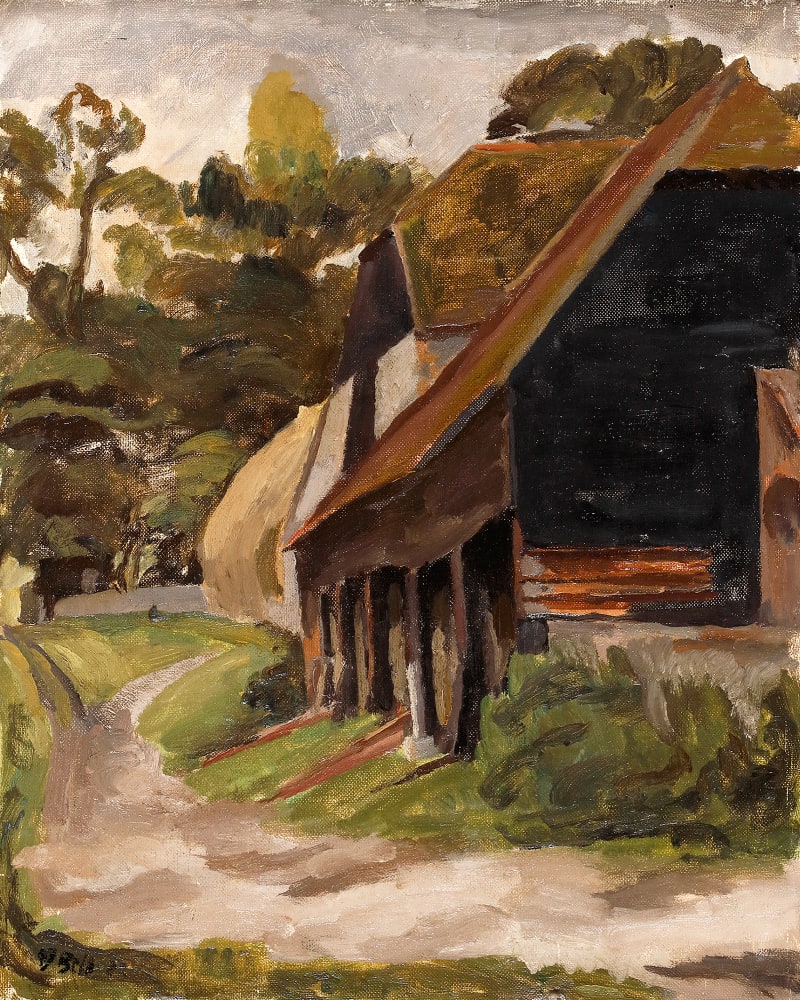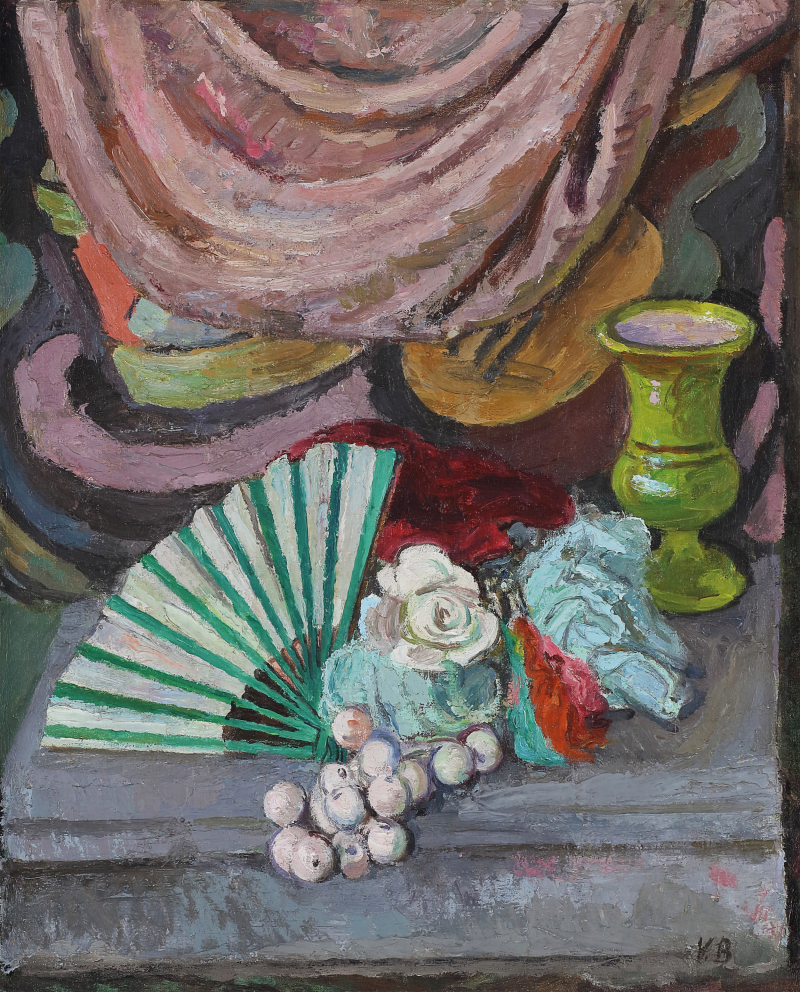To view paintings currently for sale at Philip Mould & Co, please go to www.philipmould.com .
Bell’s fascination with colour and design, with simple shapes and purposeful, geometrical associations is magnified in this modern interpretation of a traditional still-life subject. Bowl of Medlars, although simple on first glance, plays with the dominance of circular shapes, with fruit imitating the definite crimson circles on the table-cloth and one medlar in particular escaping the bowl and mischievously penetrating the only vertical line present in the composition.
Vanessa Bell and her sister Virginia Woolf were key members of the Bloomsbury Group, a collective of artistic individuals who lived and worked together, embracing an unrestricted and bohemian lifestyle. Following the death of Sir Leslie Stephen in 1904, the first editor of the Dictionary of National Biography, his four children, Vanessa, Thoby, Virginia and Adrian left their parents’ Kensington home and moved to 46 Gordon Square in the unfashionable area of...
To view paintings currently for sale at Philip Mould & Co, please go to www.philipmould.com.
Bell’s fascination with colour and design, with simple shapes and purposeful, geometrical associations is magnified in this modern interpretation of a traditional still-life subject. Bowl of Medlars, although simple on first glance, plays with the dominance of circular shapes, with fruit imitating the definite crimson circles on the table-cloth and one medlar in particular escaping the bowl and mischievously penetrating the only vertical line present in the composition.
Vanessa Bell and her sister Virginia Woolf were key members of the Bloomsbury Group, a collective of artistic individuals who lived and worked together, embracing an unrestricted and bohemian lifestyle. Following the death of Sir Leslie Stephen in 1904, the first editor of the Dictionary of National Biography, his four children, Vanessa, Thoby, Virginia and Adrian left their parents’ Kensington home and moved to 46 Gordon Square in the unfashionable area of Bloomsbury. All four children had been home-schooled until Vanessa attended Arthur Cope’s School of Art and then the Royal Academy Schools from 1901.
Thoby, Vanessa and Virginia’s oldest brother, had attended Cambridge and often brought academic and artistic friends to stay at Gordon Square. In 1905 Vanessa founded the Friday Club at their home, which acted as a weekly meeting place for artists; the group included Thoby’s friend Clive Bell, Lytton Strachey, Duncan Grant, Desmond MacCarthy, and Leonard Woolf (Virginia’s husband from 1912). However, following Thoby’s unexpected death in 1906 and Vanessa’s marriage to Clive Bell the following year, the dynamic of the artistic collective changed. In 1910 the Bells met Roger Fry, an enthusiastic artist who was devoted to promoting post-Impressionism and with whom Vanessa became infatuated – she later went on to have a relationship with him.[1]
Only a few years into their marriage Clive and Vanessa Bell realised they were no longer happy as a monogamous couple and both individuals sought relationships with other people, although they never properly separated or divorced. In 1916 Vanessa Bell and her close friend Duncan Grant moved to Charleston Farmhouse near Lewes in East Sussex, the couple soon embarked on a personal and artistic relationship that lasted a lifetime. The pair decorated their Sussex home with brightly-coloured murals, painted furniture and china, with Grant constantly extending the limits of Bell’s creativity to create large, painted works for the local Berwick Church. Bell’s relationship with Duncan Grant resulted in a daughter, Angelica, whom Clive Bell brought up as his own child. Vanessa and Clive also had two sons together, Julian and Quentin.
From 1934 Vanessa Bell experienced several personal tragedies, her lover Roger Fry died unexpectedly after taking at fall at his home, in 1937 her son Julian was killed whilst driving an ambulance during the Spanish Civil War and then four years later her sister Virginia committed suicide.
In 1951, two years before this work was painted, Vanessa Bell visited Long Crichel near Salisbury, a house owned by Desmond Shawe-Taylor. During her stay she was exposed to modern works by Picasso and Graham Sutherland, the latter’s work she described as ‘large and hot and shapeless’, and she described herself as being ‘merely thought old and old-fashioned’ in her artistic pursuit of simple beauty.[2] There is no doubt that Bell’s later works, particularly Bowl of Medlars, demonstrate a bold reaction to the professed ‘shapeless[ness]’ of post-war artworks.
By the time this still-life was painted, Vanessa Bell’s children had grown-up and she was entertaining her grandchildren at Charleston. She had become a colourist, relishing the opportunity to capture simple natural beauty using bolder brushstrokes and refined techniques. Suffering her first bout of rheumatisim in 1953, Bell found herself bound to her Sussex home with her friend Edward le Bas for most of that year, watching the Queen’s coronation on the television rather than celebrating in London.
[1] Fry helped organise two exhibitions of Impressionism, ‘Manet and the post-impressionists’ in 1910 and ‘second post-impressionist exhibition’ in 1912 which featured four works by Vanessa Bell.
[2] F. Spalding, Vanessa Bell, (London, 1983), p.333.






